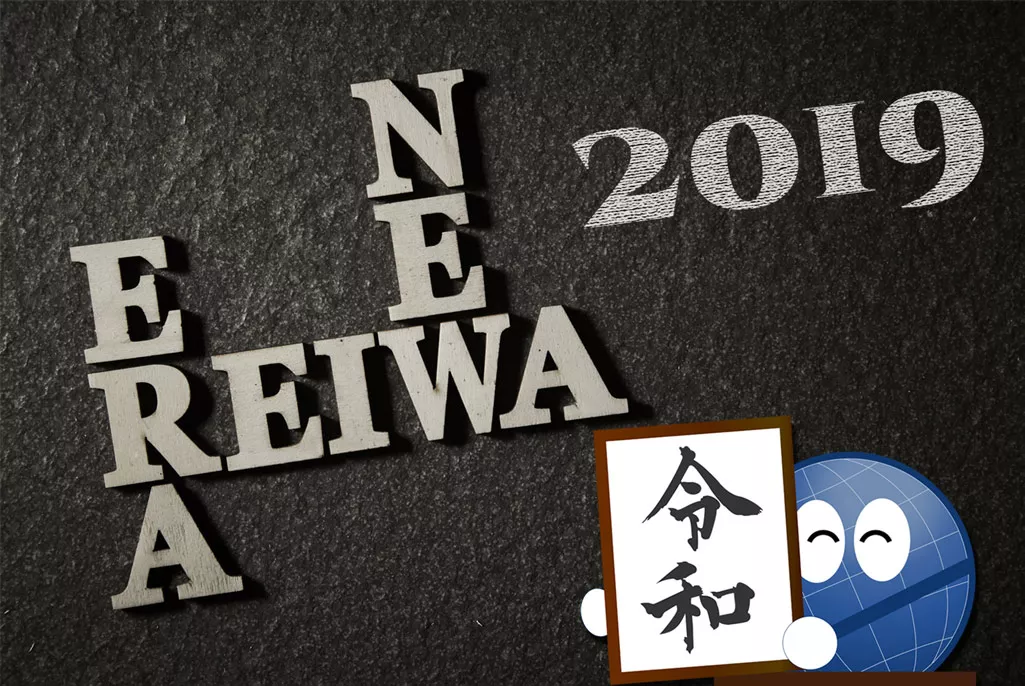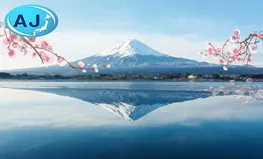Reiwa, the changing of an era and its affect on the expat community.

In Japan, with the changing of the emperor comes the changing of the era and its name. With the recent abdication of the throne by the current and 125th emperor, Emperor Akihito, the time is almost upon us when the changing of an era will take place.
Starting on May 1st of 2019 Japan’s era name will be changing from “Heisei” to “Reiwa”. For people in Japan during the era change, there may be some concerns relating to official documents, contracts, and licenses that have been marked with dates using the Japanese system. Here’s a bit of quick history on era changes in Japan, how the era change affects residents of Japan, both native and foreign, and a conversion chart for Heisei to Reiwa to the Gregorian date format.
Japanese era names (nengo or gengo) a quick history

Japan, unlike most countries, uses the Gregorian calendar in addition to its own calendar utilizing era names (nengo). Originally when the time came for the nengo to be changed, the names were decided by the current emperor and marked either the changing of the emperor or a significant event. In 1889 this changed as the government decided that the nengo will officially only be changed when the current emperor either passes away or abdicates the throne. In 1989–at the end of the “Showa” era–this law was modified to state that the nengo will be chosen by a cabinet of government officials instead of by the emperor.
Japan’s era date format (nengo) in daily life

The majority of time people in Japan will see nengo being used these days is on official documents such as a driver’s license, bank loan, marriage certificates, medical documents, surveys, and other related paperwork. While it is the default date format used for many documents, many places that are not connected to the government usually allow you to use the Gregorian date (2019 ect..) if you don’t know the current era name and year ( Heisei 30 = 2018 ) or understand how to convert the year.
Updating official documents for Reiwa
As many official documents use the nengo date format, there are many people with licenses and contracts that will expire in “Heisei 35” or later. As Reiwa starts at the end of Heisei 31, there will be no Heisei 32, 33, 34, 35 and so forth. For those experiencing the changing of the nengo, this might create some concern. Do you need to update your documents so they reflect the proper Reiwa nengo date? Or do you just have to keep converting Heisei to Reiwa until it’s time to renew your licenses and contracts?
Well it turns out the answer to this is simple yet a bit complicated. The simple part is that you will not be required to do anything about updating the dates on your documents. The complicated part is that you will have to continue converting Heisei to Reiwa until it is time to renew your documents, licenses, and contracts. As driver’s licenses and contracts expiring can cause a lot of trouble, such as having to retake your driver’s license tests, you should make sure to make some sort of reminder just in case. It should be noted that starting on March 15th of 2019, newly made or renewed Japanese driver’s licenses will have their expiration dates written in both the nengo and Gregorian date format. For those with visas, there’s no need to worry as they use the Gregorian date format. Below you can find a Heisei to Reiwa conversion table including the related year on the Georgian calendar.
How to convert Heisei to Reiwa to Gregorian date format
One of the good things about Reiwa starting in Heisei 31 is that it is fairly easy to convert it to Reiwa as they both end in 1. To easily remember you can either drop the number in the 10’s position 31 -> 1 or subtract 30 from the Heisei year and it will be the equivalent year in Reiwa.
Example: Heisei 40 - > Reiwa (40 - 30 = 10) Reiwa 10
| Heisei | Reiwa | Gregorian |
| 31 | 1 | 2019 |
| 32 | 2 | 2020 |
| 33 | 3 | 2021 |
| 34 | 4 | 2022 |
| 35 | 5 | 2023 |
| 36 | 6 | 2024 |
| 37 | 7 | 2025 |
| 38 | 8 | 2026 |
| 39 | 9 | 2027 |
| 40 | 10 | 2028 |

- Rental Apartments & Houses in Tokyo
- Listings of popular and luxurious rental apartments, condominiums, and houses designed with expats in mind.

- Apartments & Houses for Sale in Tokyo
- Listings of apartments, condominiums, and houses available for purchase in Tokyo.



















